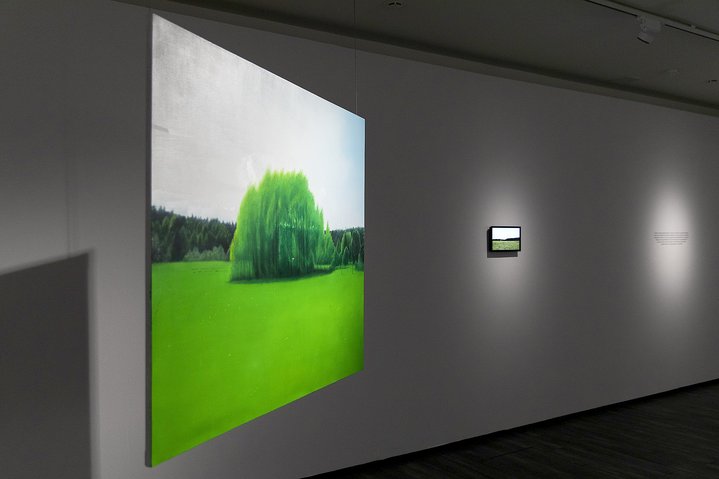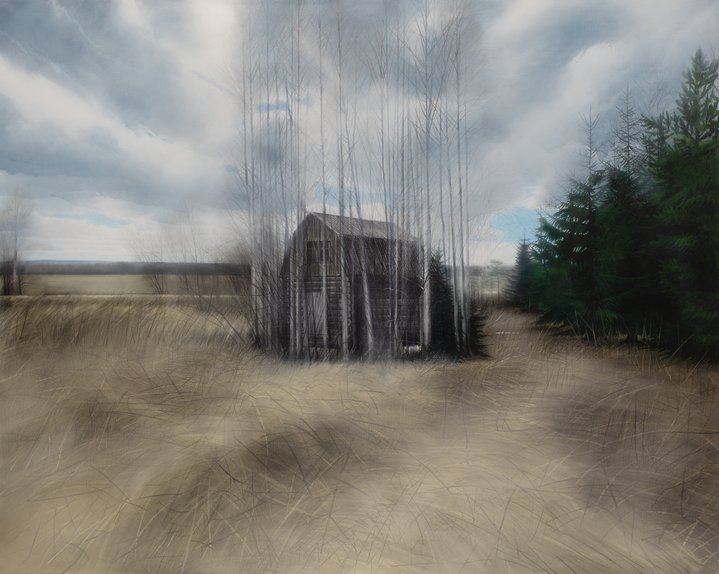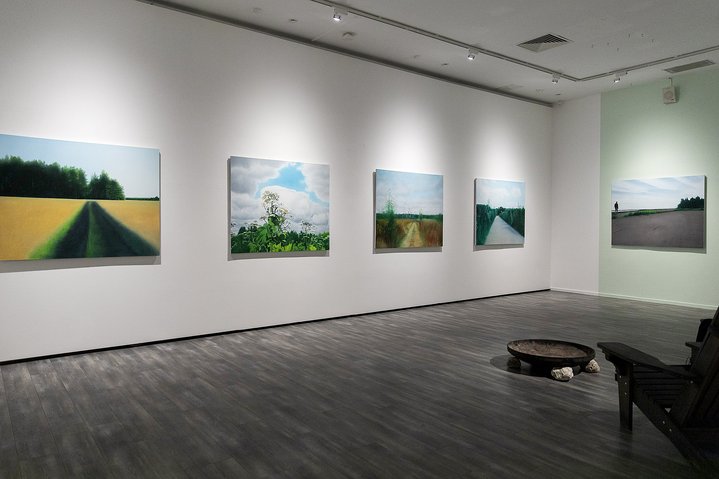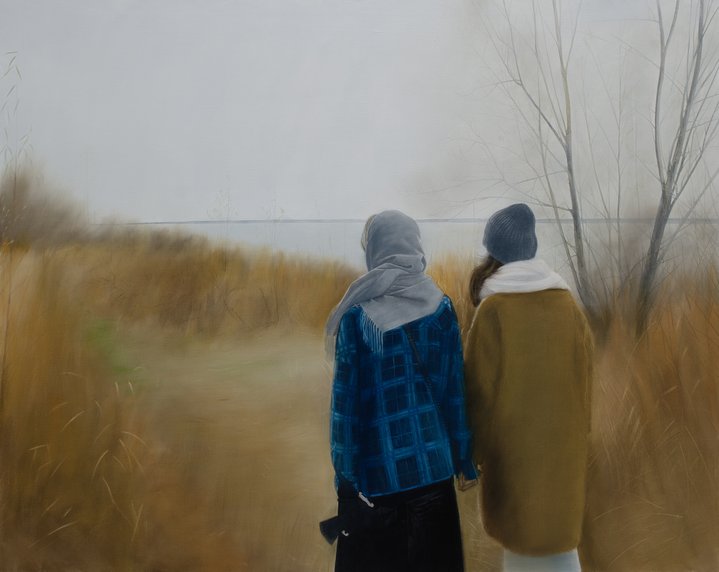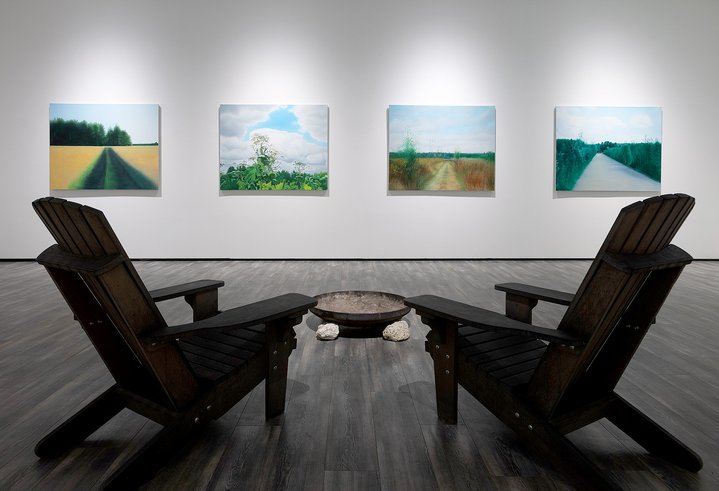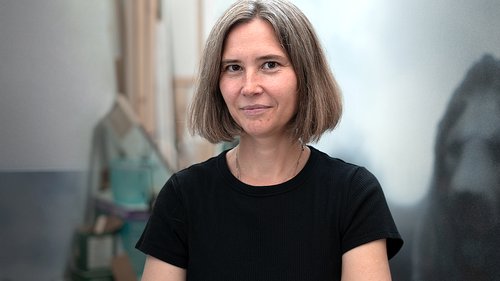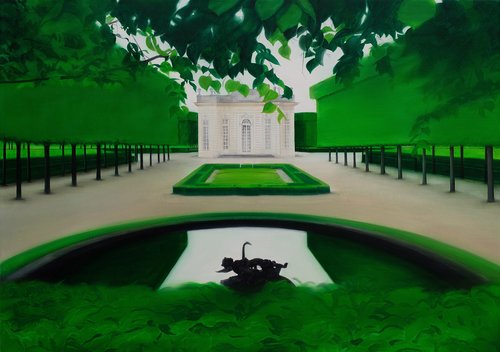Buravleva’s Laboratory of Eco-Painting
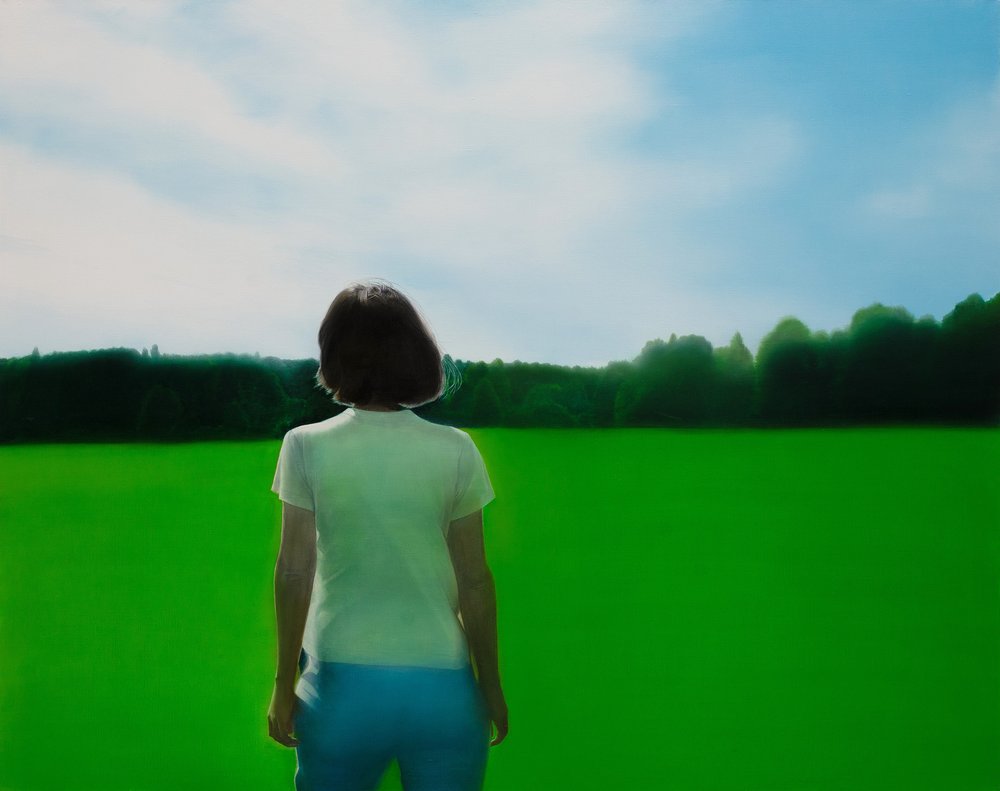
Evgenia Buravleva. Spring. Vaga, 2023. Courtesy of the artist and MMOMA press service
Using the medium of easel painting, Russian artist Evgenia Buravleva has discovered how an eco-conscious art practice today can rely on more traditional media, as her current solo show at the Moscow Museum of Modern Art demonstrates.
Her solo exhibition currently on view at MMOMA in Moscow is dedicated to a small village called Vaga in the north of the Kirov region in Central Russia where the artist herself was born. It is a collaboration between the artist, Evgenia Buravleva (b. 1980) and curators Anna Arutyunyan and Andrey Egorov, supported by Nizhny Novgorod´s Futuro Gallery. The museum´s two floors have been transformed into a kind of total installation. There, fifteen paintings, a series of portraits and drawings, act as objects, drawing the viewer into a kind of diorama. They create the effect of presence and personal involvement in the disturbed memory of the village of Vaga. It is a memory which has become a lonely field, a thicket of impenetrable forest and blankets of cow parsnip (with the fanciful Russian name borschtevik).
The land of her ancestors has changed, as the artist explains: "The village of Vaga sits on a hill from which a vast area opens up. You know that the town of Kirov lies just beyond the horizon. But from here all you can see are dense forests, in some places you cannot even pass through them. But the forests stopped growing to be cleared up a long time ago, when we lost the culture of caring for our natural environment. You do not need to walk through forests anymore, the odd mushroom picker does not affect the development of the land. No one goes to the river along the forest road anymore. The number of young deciduous trees shows that the forest is relatively recent. The trees have not yet matured."
Her paintings have become a record of this entropy. The atmosphere they create is in some ways similar to films by independent film directors, such as the rural horror ´The Blair Witch Project´ by David Myrick and Eduardo Sanchez. A piercing loneliness spills into the air, raw and windy. The hyperrealist manner is combined with an almost hallucinatory impression of visiting ghostly ´no-places´, atopias. Portraits of friends who came to Vaga are painted from the back. They seem alien and abandoned in the landscape. Cow parsnip is the true master in this dank kingdom. Evgenia Buravleva ruminates: "Sosnovsky's famous cow parsnip. It was a harmless plant, which has mutated in our moderate climate. Dangerous to humans and animals, this extremely resilient plant has colonized almost every available area. What has been abandoned by us humans or neglected for years has been taken over by it."
Evgenia Buravleva's painting technique harmonizes with the prevailing mood and theme. She is a master of the metaphysical glow of light. Streams of light flow from deep within her pictures, enveloping everything in a white mist, giving objects an unreal appearance. She uses photography as a medium, a kind of mediator. In the 19th century, the best Realist landscape painters managed to overcome the tradition of staged landscape painting of the 18th century. In our new millennium Evgenia Buravleva has overcome her dependence on photography, preferring the pure plasticity of a pictorial spot. In order to release currents of air, the artist strikes a fine balance between three elements: the classical pictorial image, photorealism and an unsettling strangeness she observes. From English eccentricity there emanates a certain luminous misty cloud of conditions. In this cloud there is the magical realism of Peter Doig's (b. 1959) painting and the glitchy pop-art excesses of David Hockney (b. 1937). Buravleva herself insists that the naive naturalism of the 18th century British animalist George Stubbs (1724-1806) has also played a role in the composition of her images of nature. In MMOMA’s halls, Evgenia's canvases are separated from the walls and turned into objects framing the contours of some imaginary crystal with diagonal facets. Deep shadows stretching across the surfaces of the rooms create a looking-glass effect.
The ground floor is connected to the upstairs floor by a mural painted on the walls of the staircase. It is a black and white cardiogram, the horizon in Vaga, which is gradually disappearing. Overhead you can hear disturbing neurotic music, a soundscape by composer Oleg Troyanovsky (b. 1980). Evgenia Buravleva tells us: "Oleg and I, have been friends for a long time and have done several collaborations. We have a similar attitude to space. Although we both look at space in a detached way, we also take it to heart. This balancing act between feelings of sympathy and a sense of looking from the outside allows us to appropriate space and then to fill it with our own feelings and thoughts. This creates a complex, vibrating picture of existence which we understand is fortuitous, yet we can read it clearly based on small expressive details. Like the sounds of an approaching or distant thunderstorm. We may perceive them positively or with anxiety, but we know that the thunderstorm will pass, and soon there will be a clear sky, and a goal. Everything depends on your point of view: spatial – from right to left, from the top of the ladder or from the bottom, or mental – from the height of experience or from the valley of the senses."
On the upper floor, the exhibition finishes with a series she has been making over the past year with coloured pencils, called ´Gardening Community´. The drawings depict a place fourteen kilometres from Kirov where since 1966 her grandparents owned a dacha. In contrast to the restrained in tone in her landscapes, the drawings of the gardening community are bright and multicoloured. They are in some ways associated with the studies into light and colour in the works of Nikolai Kasatkin (1932-2019), Erik Bulatov (b. 1933) and Sergei Shablavin (b. 1944). Spectral shifts, light halos at the edges of the objects create the impression of a laboratory study of colour and light in space. At the same time, the spectral magical separation of the ordinary picture of a commonplace gardening community allows us to assemble it in a different emotional register, to enjoy the miracle of a rediscovered world.
There is a dualism here: painstaking laboratory work with the phenomenon of the painting of form, and at the same time a metaphysical experience of the image, endowing Evgenia Buravleva´s art with both ecological purity and artistic meaning.
Evgenia Buravleva. Small Homeland
Moscow, Russia
21 February – 31 March, 2024








